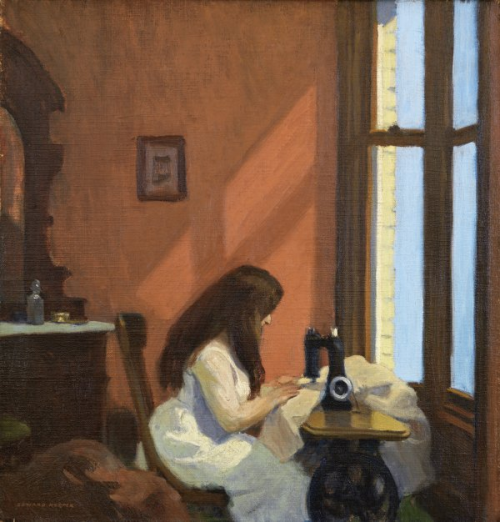Now, I understand at this point we're about half way through the semester and that many may still not be fully caught up. That's fine, just don't let this class snowball on you, because as you've probably noticed it's actually quite demanding considering we do so many different paintings. The more you procrastinate, the more of your future you're stealing from yourself! Take a look at this lecture on procrastination which I think is a good way to think about creating art, or making any goal for yourself.
So, for this week we are going to be working on a figure in an interior painting. You should all come with your image ready. Remember that these photos should not be posed, they should be candid shots taken when the model is off guard and acting naturally. When you hold up a camera and someone sees it, they immediately change, and this is much more reminiscent of a snapshot rather than a painting. The simple way to get a good photo is take tons of them. Don't worry, just go out one night with your friends, and take some shots when no one is expecting them. If you're not comfortable taking images of your friends, then go to a public place and try to sneak a few shots of people at a cafe, library, or park. There's a whole documentary about Vivian Maier who was a nanny who was secretly a street photographer with thousands of photos under her belt. If you're looking for inspiration then check that out.
For this assignment I want you to attempt to treat the figure in the exact same way as you do everything else in the room/environment. That means no special attention is givien to it. The figure is simply the same as a vase on a table, or a chair in a corner. The goal of this assignment is to try and almost hide the figure into the jumble of colors in the painting. This can be done be lightening value contrasts, making the focal point another place in the painting, and using less intense colors on the figure as compared to the background. The interior space should be given more importance and attention than the figure itself.
You should've come to class prepared with an image printed out of a figure in an interior/exterior. This is the image from which you will be working. If you want to make sure that the drawing is correct, I suggest using the grid method which will help ensure that the proportions in your drawing are correct before you begin the painting.
You can use a grid to break your composition up into more manageable pieces, and value shapes. Once your grid is finished you can jump into your painting like you always do, which is to block in the dark areas first, color match everything to your photo as you did in the last assignment, and then work lighter as you go.











